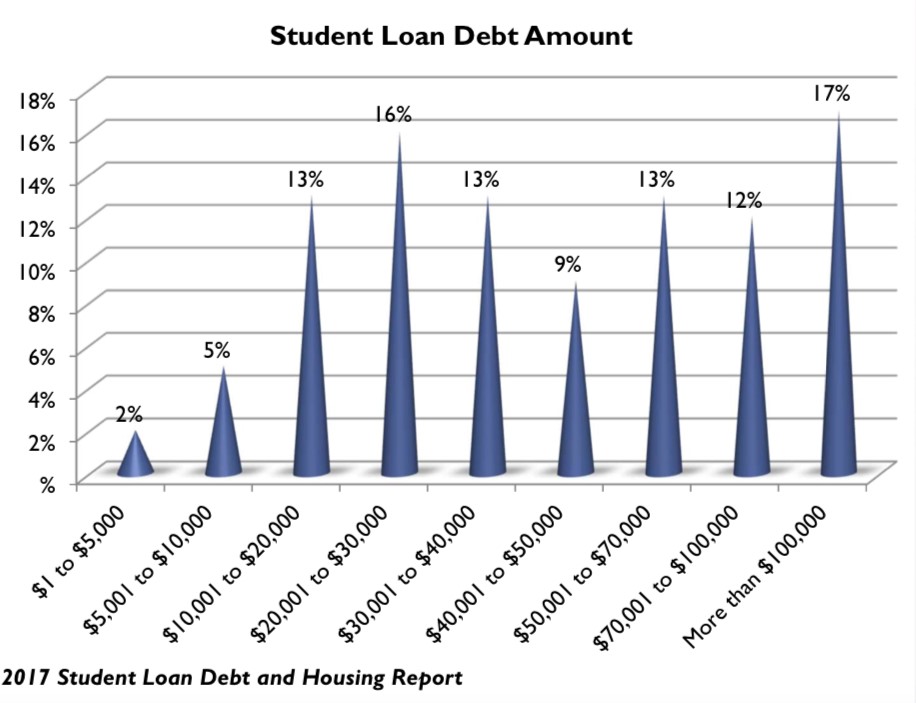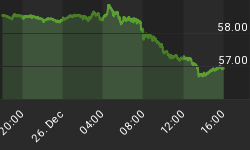Life is good, but it’s being lived on credit and reality will eventually have to dig in.
Nationally, U.S. interest payments on debt could quadruple in a decade to over $1 trillion per year, according to CNN, as tax cuts and record spending contradict each other. That means it will take $7 trillion over the next decade just to service this massive debt.
That’s the macro picture. The micro picture is a mirror image: Individual Americans are drowning in debt, too.
According to a 2017 State of Credit report from Experian the average American debt picture looked like this by the end of last year:

(Click to enlarge)
“Higher average credit scores and higher debt offer reasons for both optimism and caution heading into 2018,” wrote Experian.
“A decade since the Great Recession crashed into the American economy our relationship with debt, credit and the future is… well, it’s complicated.”
Credit scores may be rising, unemployment may be at a historic low, and the economy may have recovered from the 2008 financial crisis, but wages are as flat as can be and home ownership is lower than at any point since the 1960s, according to Experian.
Against this backdrop, consumer borrowing (not accounting for housing) is on the rise, registering an 8.8-percent jump in November last year to $3.83 trillion. In January, consumer credit rose 4.5 percent, according to the Federal Reserve.
But even with all this borrowing, home ownership is becoming disconnected with the American dream. And the overriding sentiment is that soaring student debt is in large part responsible for dragging this aspect of the American dream down.
Student debt is currently weighing down some 44 million Americans to the tune of over $1.48 trillion. It overshadows credit card debt by $620 billion. And it’s getting bigger and bigger. The average student loan borrower owes in excess of $30,000, while one-fifth owe more than $100,000.

(Click to enlarge)
Source: Student Loan Debt and Housing Report
But non-housing debt is also steadily rising:

(Click to enlarge)
In the meantime, the American dream of owning a home is vanishing, with more than 80 percent of people ages 22 to 35 blaming student loans for their inability to get a mortgage because lenders are denying them based on an unfavorable debt-to-income ratio.
Related: Warren Buffett Secures $125B In Real Estate Deals
"Student loan debt holders do want to own a home, that's part of their American dream," CNBC quoted Jessica Lautz, managing director of survey research at the National Association of Realtors, as saying. "It's just really hard to get there right now."
The American Dream is an expensive one, and so is the propensity to further it along by credit.
But it’s far from an individual problem.
Businesses are drowning, as well. The total debt of non-financial corporations at a percentage of GDP has reach 73.3 percent—that’s a new record, according to the Economist.
And the debt problem is a national challenge.
“We're addicted to debt,” Marc Goldwein, senior policy director at Committee for a Responsible Federal Budget, told reporters earlier this year, blaming both political parties.
Borrowing as a share of GDP has spiked for the first time during a non-recession since Ronald Reagan needed to fund the Cold War. Again, the American Dream may be hijacked by a revival of a global chill that has Washington eyeing a major military buildup, and on the home front, we’re drowning out students in debt and chipping away at their ability to effectively lead our future.
By Michael Scott for Safehaven.com
More Top Reads From Safehaven.com:

















